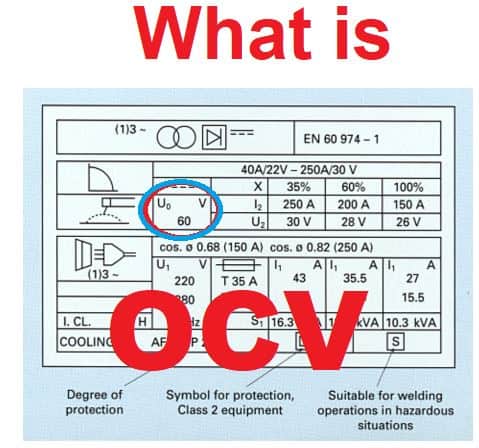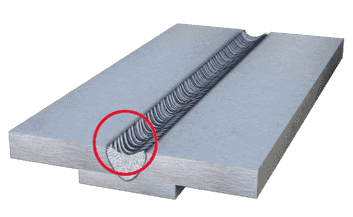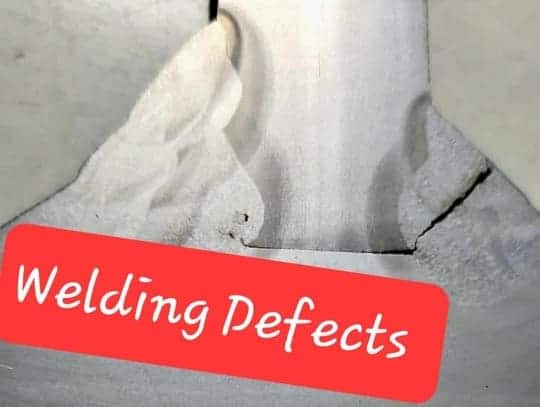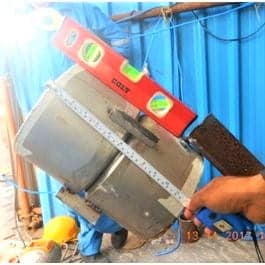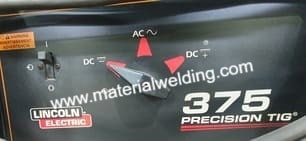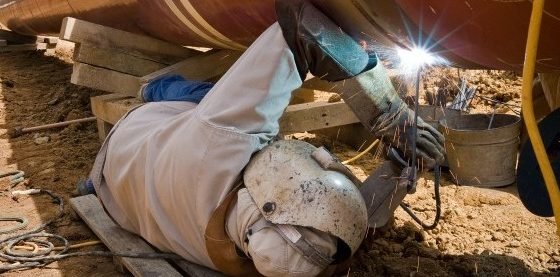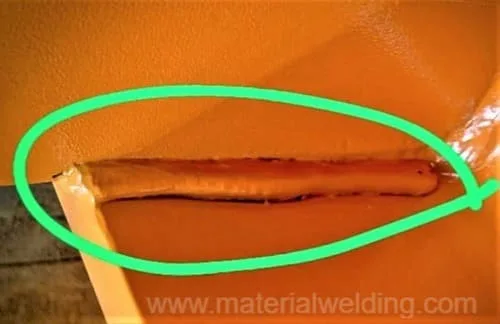Arc strike in welding
An arc strike in welding is a type of welding defect that occurs when an electric arc is struck in an unintended wrong location, such as on the surface of a metal workpiece before welding begins.
This can happen when the electrode is brought into contact with the workpiece, but not yet in the correct position to begin welding.
This can happen, for example, when the welder accidentally touches the electrode to the metal before striking the arc, or when the electrode touches the metal while being repositioned.
What arc strike means?
Arc strike refers to the phenomenon that occurs when an electric arc is initiated in an improper location or at an improper time during welding.
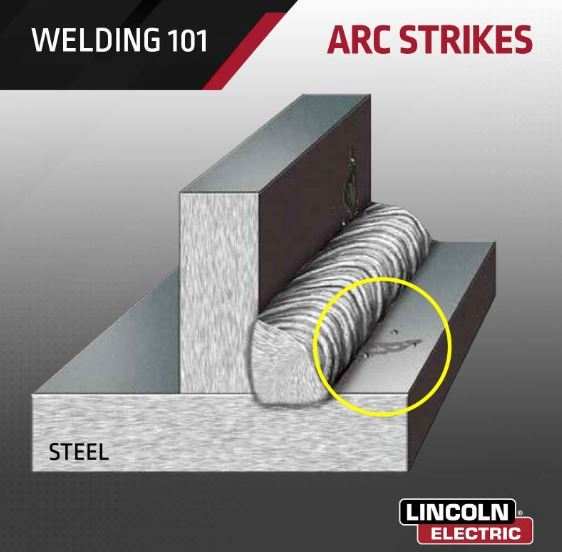
The intense heat and sparks generated by an arc strike can cause a number of problems, including damage to the electrode and welding equipment, poor quality welds, localized hardness zones and porosity.
Arc strike on pipes can occurs during welding and must be repaired. See below example, where arc strike on a pipe result in in-service failure.
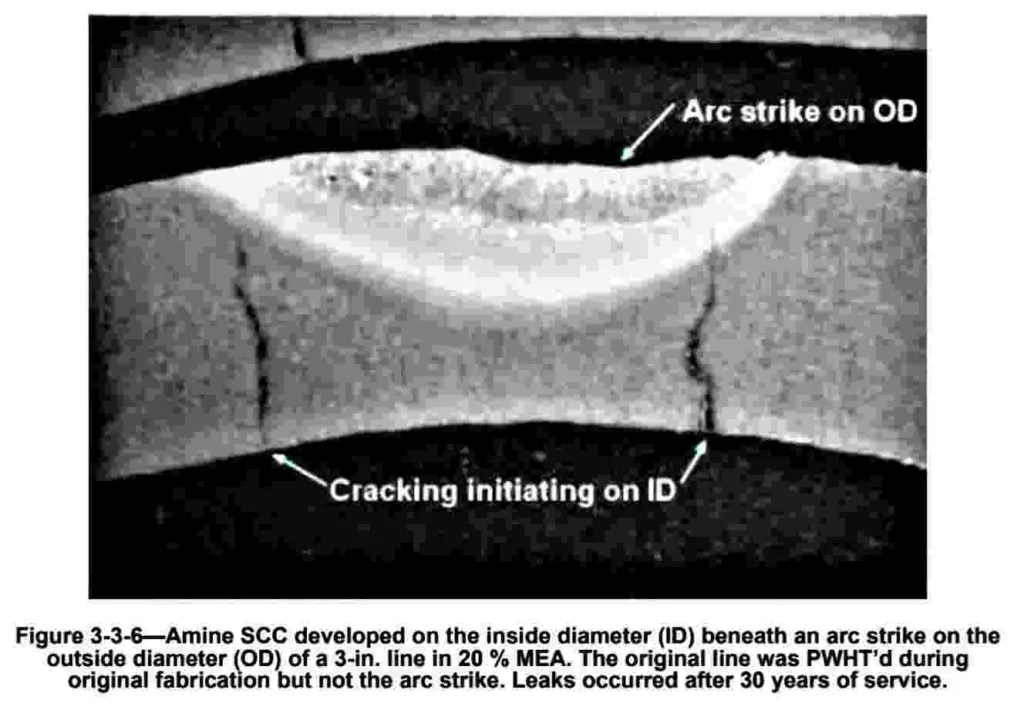
Welding arc strike on flange face can cause leaks. Arc strikes outside welding zone must be repaired properly to ensure sound base material.
The final inspection after repair should include visual inspection for carbon steel and hardness & Penetrant test for alloy steels.
How arc strike occurs in arc welding?
Arc strike can occur in arc welding when the electrode (or welding rod) accidentally strike arc on base metal instead of weld joint location.
This can happen due to a number of factors such as lack of proper training, poor technique, or equipment malfunction.
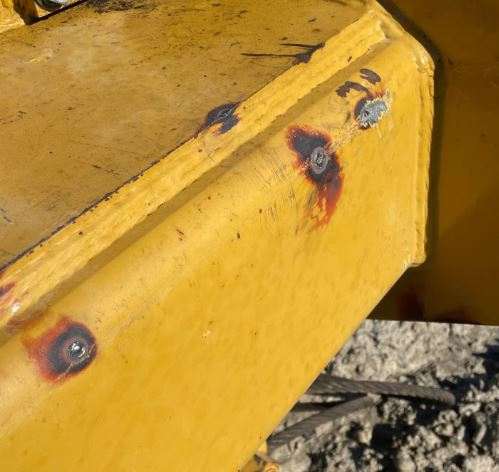
Here are a few examples of how an arc strike can occur:
- Incorrect electrode positioning: If the electrode is not held at the correct angle or distance from the metal, it can accidentally touch the metal before the arc is struck, causing an arc strike.
- Improper technique: If the welder is not properly trained or experienced, they may use improper techniques that can lead to an arc strike. The welder moves the electrode too close to the metal before striking the arc, causing the electrode to touch the metal before the arc is established.
- Damaged electrode: The welder is using a worn or damaged electrode that is more prone to sticking or sticking to the metal.
- Dirty or contaminated metal: If the metal surface is dirty or contaminated, it can be difficult to strike an arc and the electrode may accidentally touch the metal, causing an arc strike.
- Electrical issues: If the welding machine is not functioning correctly or if the electrical power is unstable, it can cause difficulty in striking an arc or the electrode may accidentally touch the metal, causing an arc strike.
- Wrong settings: The welding machine’s settings are not adjusted properly, causing the electrode to come into contact with the metal before the arc is struck.
Welding Arc strike causes and remedies
The main causes and their remedies for welding arc strike are given in the below table:
| Cause of Arc Strike | Remedy |
| Loose earthing connections | Make sure to use right earthing clamps and tight them properly |
| Damaged electrodes | Use good quality rods only. |
| Welders’ carelessness | Train the welders and bring awareness about arc strike hazards. |
| Damaged electrode holder | Replace with new electrode holder |
| improper welding techniques | practice proper welding techniques |
| incorrect welding parameters | adjust welding parameters as per the requirement |
| using a damaged welding cable | replace damaged cable |
| using wrong type of electrodes | use the correct type of electrode |
Why are arc strikes bad?
Arc strikes in welding can be bad because they can cause a number of issues. Some of the main reasons why arc strikes are bad in welding include:
- Crack or porosity at the arc strike location,
- Base metal contamination,
- Need extra resources to repair or grind,
- Create local high hardness zones, especially critical issue with low alloy steels.
How to prevent arc strikes in welding?
There are several steps that can be taken to prevent arc strikes in welding:
- Use proper welding techniques: Proper welding techniques, such as maintaining a consistent arc length and using the correct welding parameters, can help to prevent arc strikes.
- Use the correct equipment: Using the correct type of welding equipment and ensuring that it is in good working order can help to prevent arc strikes.
- Maintain clean and dry surfaces: Keeping surfaces clean and dry can help to prevent arc strikes by reducing the chances of a discharge occurring.
- Use proper insulation: Using proper insulation on equipment and connections can help to prevent arc strikes by reducing the chances of a high-energy discharge occurring.
- Regularly train the welder: Regularly train the welder on proper welding techniques, safety measures, and the use of welding equipment to prevent arc strikes.
How to repair arc strike?
The repair process for an arc strike in welding will depend on the specific type of damage that has occurred. Small arc strikes can be removed by grinding only.
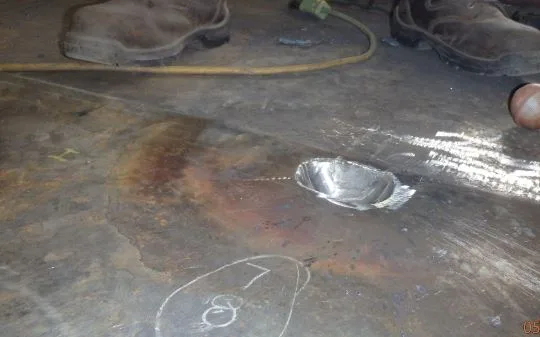
Here are a few general steps that can be taken to repair an arc strike:
- Inspect the damage: Carefully inspect the area of the arc strike to determine the extent of the damage. Look for any cracks, holes, or other signs of damage.
- Clean the area: Clean the area around the arc strike using a wire brush or other cleaning tool. This will help to remove any debris or contaminants that may have been caused by the arc strike.
- Grind or file the area: Use a grinding wheel or file to smooth out any rough or uneven areas caused by the arc strike. This will help to prepare the area for the repair. Some arc strike can rectified by grinding only.
- Weld the repair: For arc strike damage in base metal, weld using a similar metallurgy filler rod. For example, welding using E7018 for CS material.
- Grind and finish the repair: Once the welding is complete, use a grinder to smooth out the repair and finish the surface.
- Inspect the repair: Visually inspect the repair area. For critical materials, use DP test to inspect the arc strike repair.
ASME B31.3 arc strike Acceptance Criteria
Arc strike welding defect is not defined in ASME B31.3 or ASME Codes. But in general, arc strike is not acceptable and need to be repaired.
